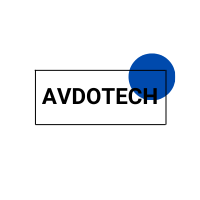Best Productivity Tools for Startups

In the dynamic realm of startups, where every moment counts, leveraging the right productivity tools can make all the difference between success and stagnation. The pivotal role these tools play in shaping the trajectory of a startup. In this comprehensive guide, we unveil a curated list of the best productivity tools for startups, empowering you to streamline operations, boost collaboration, and propel your venture to new heights.
In this digital age, the right productivity tools can serve as the catalysts that propel a startup toward success. From communication and project management to analytics and financial management, the array of tools available can be both a boon and a dilemma. This blog delves into the intricacies of selecting the best productivity tools for startups, navigating through the diverse options that promise to streamline operations and foster growth. Whether you’re a burgeoning entrepreneur or a seasoned startup enthusiast, join us on this exploration of the best tools that can elevate your startup game to new heights.
1.For Communication and Collaboration
Slack
Slack is more than just a messaging platform; it’s the nerve center for team collaboration. Beyond channels and direct messages, Slack integrates with an extensive range of apps and services. Its robust search functionality ensures that historical conversations and shared files are easily accessible. With features like threaded conversations and the ability to create custom channels, Slack tailors communication to the specific needs of startups, fostering a culture of transparency and quick decision-making.
Microsoft Teams or Google Workspace:
Microsoft Teams, integrated with Microsoft 365, offers a centralized collaboration hub. It goes beyond mere communication, facilitating seamless document editing, project management, and video conferencing. Google Workspace, with its suite of cloud-based applications, promotes real-time collaboration on documents, spreadsheets, and presentations. Both platforms emphasize the integration of communication tools with productivity applications, creating a holistic environment for teams.
For Project Management
Trello
Trello is a visual project management tool that allows teams to create boards for projects and populate them with lists and cards representing tasks. Its flexibility shines as teams can customize workflows, add due dates, and attach files directly to tasks. With features like Power-Ups for integration with other tools, Trello adapts to the unique project management needs of startups, enhancing agility.
Asana
Asana elevates project management with features like task dependencies, project timelines, and workload management. Teams can break down complex projects into manageable tasks and visualize progress with Gantt charts. The ability to create custom project views, coupled with integrations, transforms Asana into a comprehensive platform for task execution and project tracking.
For Task Management
Todoist or Wunderlist
Todoist and Wunderlist excel in simplifying task management. They offer intuitive interfaces, allowing users to create tasks, set due dates, and categorize them into projects. Collaboration is streamlined through shared project boards and the ability to assign tasks to team members, enhancing accountability and visibility.
Todoist excels with its intuitive design and advanced features, making it suitable for those who seek sophistication without sacrificing simplicity. On the other hand, Wunderlist, despite its retirement, may still appeal to users seeking straightforward task management and collaborative capabilities. As both Todoist and Wunderlist have played pivotal roles in shaping task management practices, users may find that either tool effectively addresses their productivity needs.
4. For Document Management,
Google Drive or Dropbox
Google Drive’s strength lies in real-time collaboration. Multiple users can simultaneously edit documents, fostering seamless teamwork. Dropbox, with its file syncing capabilities, ensures that teams have access to the latest version of files offline. Both platforms provide secure cloud storage, allowing startups to organize, share, and collaborate on documents effortlessly.
When deciding between Google Drive and Dropbox, users should consider their workflow, collaboration requirements, and preferred applications. Google Drive shines for those deeply entrenched in the Google Workspace environment, offering seamless collaboration and integration. On the other hand, Dropbox’s simplicity and cross-platform compatibility make it an excellent choice for users who prioritize ease of use and flexibility.
Notion
Notion is a groundbreaking all-in-one workspace that redefines productivity by seamlessly integrating note-taking, collaboration, and project management. With its modular structure and versatile building blocks, users can create dynamic content on a unified platform, fostering creativity and idea expression. Notion’s collaborative features enhance teamwork, allowing real-time interactions, task assignments, and transparent communication.
The platform integrates with third-party applications, maintaining connectivity within workflows. Cross-platform accessibility across desktop and mobile devices ensures a consistent user experience, making Notion a transformative solution for individuals and teams seeking a flexible and collaborative workspace.
5. For Customer Relationship Management (CRM)
HubSpot CRM or Salesforce
HubSpot CRM offers startups a user-friendly interface to manage customer relationships, track leads, and automate sales processes. It seamlessly integrates with other HubSpot tools for marketing and customer service. Salesforce, as a more extensive CRM solution, provides customization options, workflow automation, and in-depth analytics, catering to startups with complex sales processes.
When it comes to Customer Relationship Management (CRM), the choice between HubSpot CRM and Salesforce reflects the decision-making process of businesses seeking effective tools for managing customer interactions, lead tracking, and sales automation.
On the other hand, Salesforce, with its extensive features and customization options, caters to enterprises requiring a robust and scalable CRM platform. Salesforce’s vast ecosystem, AppExchange, and powerful automation tools make it a preferred choice for larger enterprises with complex sales structures.
6. For Productivity Suites
Microsoft 365 or Google Workspace
Microsoft 365 provides a suite of desktop and cloud-based applications, ensuring that teams have powerful tools like Word, Excel, and Outlook at their disposal. Google Workspace, with its emphasis on cloud collaboration, allows teams to work on documents simultaneously, fostering real-time collaboration and accessibility from any device.
Microsoft 365, encompassing familiar applications like Word, Excel, and Outlook, offers a seamless experience for users already accustomed to Microsoft tools. Its integration with OneDrive facilitates robust cloud storage and collaboration, making it an ideal choice for those deeply entrenched in the Microsoft ecosystem.
7. For Time Tracking
Toggl or Harvest
In the realm of time tracking tools, the choice between Toggl and Harvest reflects the nuanced needs of users seeking efficient ways to monitor working hours and enhance productivity. Toggl, known for its simplicity and user-friendly interface, provides a straightforward platform for individuals and teams to track time seamlessly. With features like one-click timers and project categorization, Toggl excels in offering a hassle-free experience.
On the other hand, Harvest brings robust time-tracking capabilities coupled with powerful reporting tools, making it an ideal choice for businesses requiring in-depth insights into project timelines and resource allocation. Both Toggl and Harvest offer integrations with various project management tools, providing flexibility in workflow.
8. For Financial Management
QuickBooks or Xero
QuickBooks and Xero streamline are used for financial management by automating invoicing, expense tracking, and financial reporting. They provide startups with clear financial visibility, facilitating informed decision-making. QuickBooks emphasizes ease of use, while Xero offers robust accounting features, catering to startups with varying financial needs.
QuickBooks offers a comprehensive suite of tools for invoicing, expense tracking, and financial reporting. Its user-friendly interface and extensive integrations make it a popular choice for startups looking for a versatile and scalable solution. On the other hand, Xero stands out for its cloud-based approach, providing real-time collaboration and accessibility. With features like bank reconciliation, invoicing, and inventory tracking, Xero caters to startups seeking a flexible and modern accounting solution.
9. For Social Media Management
Buffer or Hootsuite
Buffer and Hootsuite empower startups to manage their social media presence efficiently. From scheduling posts across multiple platforms to analyzing engagement metrics, these tools provide a centralized hub for social media activities. Their analytics features offer insights that aid in refining social media strategies.
Buffer, recognized for its user-friendly interface and simplicity, offers a straightforward solution for individuals and small businesses seeking efficient post-scheduling across multiple platforms. On the other hand, Hootsuite is a robust and feature-rich platform catering to businesses with more comprehensive social media needs.
11. For HR and Employee Management
BambooHR or Gusto
BambooHR and Gusto automate HR processes, including onboarding, time tracking, and performance management. These tools ensure compliance with HR regulations, enhance employee experience and contribute to overall organizational efficiency in the realm of workforce management.
BambooHR, recognized for its intuitive interface and comprehensive HR features, offers solutions for employee data management, onboarding, and performance tracking. With its emphasis on simplicity and efficiency, BambooHR caters to businesses looking for a user-friendly HR solution. In contrast, Gusto excels in providing end-to-end HR and payroll services, seamlessly integrating payroll, benefits administration, and compliance.
13. For Development and Collaboration
GitHub or Bitbucket
GitHub and Bitbucket are not just version control systems; they are collaborative platforms for software development. With features like pull requests, code reviews, and issue tracking, these tools enhance team collaboration, ensuring the development process is streamlined and efficient.
GitHub, a widely adopted and community-driven platform, excels in fostering collaboration through features like pull requests, code reviews, and seamless integrations. It’s a go-to choice for open-source projects and teams looking for a robust, social coding environment. Conversely, Bitbucket, backed by Atlassian, provides a comprehensive Git solution with the added flexibility of supporting Mercurial repositories.
14. For Design and Creativity
Adobe Creative Cloud:
Adobe Creative Cloud is a comprehensive suite for designers, offering industry-standard tools like Photoshop, Illustrator, and InDesign. It caters to the diverse creative needs of startups, empowering designers to bring their visions to life.
At the forefront of design and creativity, Adobe Creative Cloud emerges as an indispensable suite of tools, offering a comprehensive array of applications for graphic design, video editing, photography, and more. With flagship software such as Photoshop, Illustrator, and InDesign, Creative Cloud caters to the diverse needs of creative professionals, empowering them to bring their artistic visions to life.
Canva
Canva, with its user-friendly interface and extensive template library, democratizes design. Non-designers within startups can create professional-looking graphics for various purposes, from social media posts to presentations.
Canva stands out as an accessible and user-friendly graphic design tool, making the creation of professional-looking visual content achievable for individuals with varying design expertise. With its intuitive drag-and-drop interface, Canva provides a platform where users can effortlessly design presentations, social media graphics, posters, and more, even without extensive design skills. The platform offers a vast library of templates, images, and design elements, allowing users to customize and personalize their creations with ease.
15. For Virtual Meeting and Webinar
Zoom or Microsoft Teams
Zoom and Microsoft Teams are not just video conferencing tools; they are virtual meeting and webinar platforms. With features like breakout rooms, screen sharing, and chat, they facilitate effective communication and collaboration for remote or distributed teams.
Zoom, renowned for its user-friendly interface and reliability, has become synonymous with virtual meetings, offering features like breakout rooms, webinars, and seamless integrations. It caters to businesses of all sizes with its scalability and straightforward meeting setup. On the other hand, Microsoft Teams, integrated within the Microsoft 365 ecosystem, provides a comprehensive collaboration hub with features like chat, file sharing, and video conferencing. It excels in fostering team collaboration beyond meetings, making it an attractive choice for organizations deeply embedded in the Microsoft productivity suite.
Conclusion
choosing the right productivity tools for startups is a critical decision that can significantly impact efficiency, collaboration, and overall success. Whether opting for the streamlined communication of Slack or the project management prowess of Trello and Asana, each tool plays a unique role in shaping the startup ecosystem. Similarly, the careful consideration between Microsoft 365 and Google Workspace, QuickBooks and Xero, or GitHub and Bitbucket reflects the nuanced needs and preferences of the startup landscape.
The key lies in aligning these tools with the specific requirements, team dynamics, and growth trajectory of the startup. As the technological landscape continues to evolve, regularly reassessing and adapting the toolset becomes paramount to ensure it remains finely tuned to the ever-changing demands of the business. By leveraging the right mix of productivity tools tailored to their unique needs, startups can pave the way for streamlined operations, enhanced collaboration, and sustained growth in the dynamic business landscape.

Avdo Tech
Welcome to AvdoTech – your premier source for diverse insights and the latest trends in the ever-evolving web community. As a leading global publication, AvdoTech thrives on delivering timely and engaging information across a spectrum of niches, including Business, Technology, Marketing, and Home improvement.





